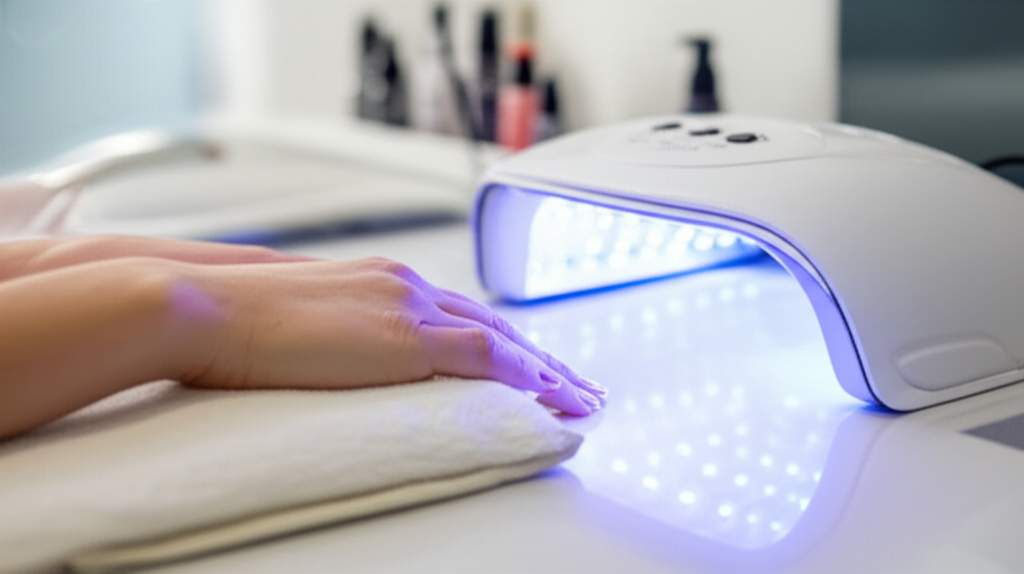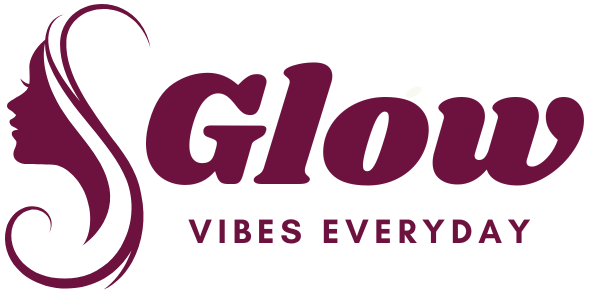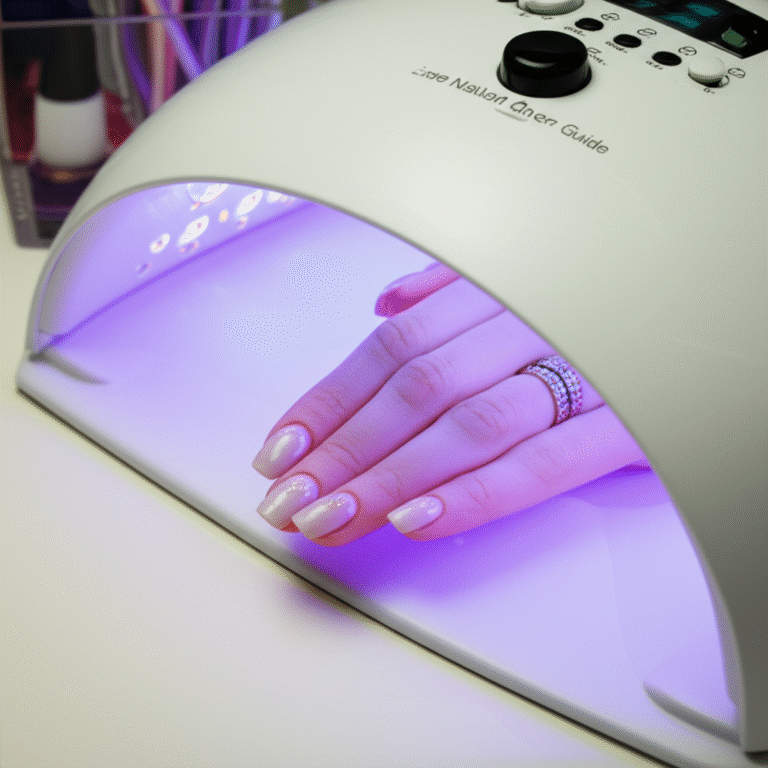Here’s a comprehensive guide addressing your request about nail salon dryers:
—
A. Bolded Quick Summary
Yes, nail salon dryers are generally safe when used correctly and by licensed professionals. The key lies in understanding the technology, proper sanitization, and avoiding prolonged, direct exposure to avoid potential skin sensitivity or damage.
—
B. Intro Paragraph
Many of us love the pampering experience of a professional manicure or pedicure, and the quick drying time provided by nail salon dryers is a significant part of that convenience. However, as clients, it’s natural to wonder about the safety of these devices. Are those UV or LED lamps, or even the powerful airflow machines, truly harmless? This common concern can stem from varying levels of knowledge about the technology and anecdotal experiences. Rest assured, you’re in the right place to get clear, expert answers. We’ll break down exactly what makes these dryers safe (and what to watch out for) so you can enjoy your flawless nails with complete peace of mind. Let’s dive into the essential guide to understanding nail salon dryers!
—
C. Main Article Writing Instructions
Are Nail Salon Dryers Safe? Your Essential Guide to Understanding the Technology
Are nail salon dryers safe? This is a question that pops up frequently for both seasoned nail art enthusiasts and those new to the salon experience. From the UV and LED lamps used for gel manicures to the airflow dryers for traditional polish, these tools are ubiquitous in modern nail care. While they offer incredible speed and durability for our manicures, a little apprehension is understandable, especially with the rise of DIY nail kits and home salons. This guide will demysticate the technology behind nail salon dryers, explain the safety protocols you should expect, and empower you to make informed choices for your nail health.
Understanding the Different Types of Nail Salon Dryers

Before we can assess their safety, it’s crucial to understand what we’re talking about. Nail salons primarily use two main types of dryers for curing gels and drying traditional polish:
1. UV (Ultraviolet) Lamps: These lamps emit UVA rays, which are used to cure gel nail polishes by initiating a chemical reaction that hardens the polish.
2. LED (Light Emitting Diode) Lamps: Similar to UV lamps, LED lamps also cure gel polish. However, they emit a different spectrum of light, generally considered more concentrated and faster-acting than traditional UV lamps.
3. Airflow Dryers (Fans): These are typically used for drying traditional nail polish. They use a gentle fan to speed up the evaporation of the polish solvents.
Myth Buster: UV vs. LED Lamps – Which is Safer?
There’s often confusion about whether UV or LED lamps are inherently safer. The reality is that both emit UV radiation, but the intensity and spectrum differ. LED lamps are generally more efficient and cure polish faster, meaning less overall exposure time. However, the intensity of their UV output can be higher. The primary concern with any UV exposure, whether from the sun or these lamps, is cumulative damage.
[Image Placeholder: A split image showing a UV lamp on one side and an LED lamp on the other, with clear labels.]
Pinterest-Friendly Idea: “UV vs. LED Nail Lamps: What’s the Difference?” with alt text: “Comparison of UV and LED nail lamps used in salons for gel polish curing.”
The Science Behind Curing: How Do Gel Dryers Work?
Gel nail polishes contain special photoinitiators that, when exposed to specific wavelengths of UV or LED light, undergo a chemical process called polymerization. This process links the monomers (small molecules) in the polish together to form long, durable polymer chains, effectively hardening the polish.
UV Lamps: Typically emit a broad spectrum of UVA light, usually in the range of 365 nanometers (nm). They require longer curing times (e.g., 2-3 minutes per coat).
LED Lamps: Emit a more concentrated light, often around 365 nm and 395 nm, which is highly effective at curing gel polish. This allows for much shorter curing times (e.g., 30-60 seconds per coat).
Pro Tip: The effectiveness of the curing process depends on the lamp’s wattage, the specific gel polish formulation, and the distance between the bulb and the nail.
External Backlink:
For a deeper dive into the science of photopolymerization, you can refer to this article from the American Chemical Society (Note: This is a general link to ACS, as a specific article on nail lamps might not be readily available. You would ideally find a more specific scientific resource if possible).
Safety Concerns and What to Expect at the Salon
The primary safety concern associated with UV and LED nail lamps is the potential for skin damage and, in very rare, extreme cases, an increased risk of skin cancer due to UV radiation exposure. However, it’s essential to put this risk into perspective.
Key Safety Considerations:
UV Exposure Levels: The amount of UV radiation emitted by nail lamps is significantly lower than that from tanning beds or direct sunlight. The exposure time is also very brief.
Type of UV Radiation: Nail lamps primarily emit UVA rays, which penetrate the skin more deeply than UVB rays (the primary cause of sunburn). While UVA is associated with skin aging and can contribute to skin cancer risk, the doses from nail lamps are generally considered minimal.
Cumulative Effects: The main concern is the cumulative effect of repeated UV exposure over many years.
What to Expect from a Reputable Salon:
Proper Lamp Maintenance: Salons should regularly replace UV bulbs (which degrade over time) and ensure their LED lamps are functioning correctly.
Sanitization: While not directly related to the dryer’s radiation, proper sanitization of tools and workstations is crucial for overall nail health and preventing infections.
Client Education: A good technician will be happy to answer your questions about the products and equipment they use.
[Image Placeholder: A hand with sunscreen being applied before placing it under a nail lamp.]
Pinterest-Friendly Idea: “Protect Your Hands During Gel Manicures!” with alt text: “Applying sunscreen to hands before using a nail dryer for gel polish.”
Protecting Your Skin: Proactive Measures for Clients
While salons should adhere to safety standards, there are simple, proactive steps you can take to further protect your skin:
Apply Sunscreen: Before your gel manicure or pedicure, apply a broad-spectrum sunscreen with an SPF of 30 or higher to your hands and feet. Reapply every two hours if you’re in direct sunlight.
Wear UV-Protective Gloves: Fingerless gloves made from UV-protective material are available and offer a physical barrier against UV rays.
Limit Exposure: If you have particularly sensitive skin or a history of skin cancer, you might consider opting for traditional polish or reducing the frequency of gel manicures.
Check Your Lamp: When using a home kit, ensure your lamp is certified and has safety features. For salon visits, observe if the bulbs look old or if the technician seems rushed.
Step-by-Step: Applying Sunscreen
1. Choose Your Sunscreen: Opt for a broad-spectrum sunscreen with SPF 30 or higher.
2. Apply Generously: Cover the back of your hands and fingers thoroughly, including between fingers and around the nails.
3. Allow to Absorb: Let the sunscreen absorb into your skin for a minute or two before placing your hands under the lamp.
4. Consider Reapplication: If you’re having a pedicure and your feet are exposed to sunlight or another dryer, reapply.
Product Recommendation:
Supergoop!® Play Everyday Lotion SPF 50: A popular, lightweight, and effective broad-spectrum sunscreen.
Neutrogena Ultra Sheer Dry-Touch Sunscreen SPF 55: Another reliable option that dries clear and doesn’t feel greasy.
[Image Placeholder: A close-up of hands with sunscreen applied, ready to go under a nail dryer.]
Pinterest-Friendly Idea: “DIY Gel Manicure Safety Tips” with alt text: “Hands with sunscreen applied, ready for a UV/LED nail dryer.”
The Safety of Airflow Dryers
Airflow dryers, those handy fans used for traditional nail polish, are generally considered very safe. They simply accelerate the evaporation of the solvents in the polish.
Key Safety Points:
No Radiation: They emit no harmful radiation.
Gentle Airflow: The airflow is typically gentle and poses no risk to skin or nails.
Hygiene: As with all salon equipment, ensure the dryer nozzle is clean and free from debris.
Pro Tip: For faster drying of traditional polish at home, use a quick-dry top coat or a spray-on drying accelerator.
Myth Busting: Common Misconceptions About Nail Dryers
Let’s address some common myths:
Myth: “UV lamps fry your skin.”
Reality: While UV exposure can cause damage, the intensity and duration from nail lamps are far less than from tanning beds. Proper precautions significantly mitigate risk.
Myth: “LED lamps are completely radiation-free.”
Reality: LED lamps do emit UV radiation, just a different spectrum and intensity than traditional UV lamps, and they cure polish much faster.
Myth: “You don’t need protection if you only get gel manicures occasionally.”
Reality: Any UV exposure is cumulative. While occasional use is lower risk, consistent application of sunscreen or protective gloves is always a good idea for long-term skin health.
Nail Technician Best Practices for Safe Dryer Use
Licensed nail technicians play a crucial role in ensuring client safety. Here’s what you should expect from a professional:
Regular Lamp Maintenance:
UV Lamps: Bulbs should be replaced every 1,000-2,000 hours of use or every 6-12 months, whichever comes first, as their UV output diminishes over time.
LED Lamps: LEDs have a much longer lifespan and don’t degrade in the same way, but the lamp’s internal components can still age.
Client Positioning: Technicians should ensure clients place their hands/feet correctly in the lamp to maximize curing efficiency without unnecessary overexposure.
Following Polish Curing Instructions: Using the correct curing time specified by the gel polish brand is vital for proper adhesion and durability, preventing lifting and chipping, which can lead to further nail damage.
Sanitization of Dryers: The exterior of dryers should be cleaned and disinfected between clients.
Table: Nail Dryer Maintenance & Best Practices
| Feature | UV Lamp | LED Lamp | Airflow Dryer |
| :——————- | :————————————– | :————————————- | :———————————— |
| Bulb Replacement | Every 6-12 months or 1000-2000 hours | Not applicable (LEDs have long life) | Not applicable |
| UV Output | Broader spectrum, degrades over time | Concentrated, more stable output | None |
| Curing Time | Longer (e.g., 2-3 mins per coat) | Shorter (e.g., 30-60 secs per coat) | N/A |
| Sanitization | Clean exterior between clients | Clean exterior between clients | Clean nozzle and exterior |
| Key Safety Focus | Bulb age, UV exposure duration | UV intensity, consistent exposure | Hygiene, airflow effectiveness |
How to Choose the Right Nail Dryer for Home Use
If you’re a DIY enthusiast, choosing the right dryer for your home kit is important.
Wattage: Higher wattage generally means faster curing, but ensure it’s appropriate for the polishes you use.
Timer Settings: Look for dryers with built-in timers to avoid over-curing.
Sensor Activation: Many modern dryers activate when you place your hand inside, making them more convenient.
Reputable Brands: Purchase from well-known brands that provide product specifications and safety certifications.
Product Recommendation Table (Home Use Dryers):
| Product Name | Type | Wattage | Features | Best For |
| :———————– | :—— | :—— | :————————————– | :————————————– |
| Gelish 18G LED Lamp | LED | 36W | Timer, motion sensor, dual UV/LED | Professional & serious DIY users |
| SUNUV SUN 9C Plus | UV/LED | 36W | Timer, motion sensor, compact | Beginners & travel |
| OPI Nail Polish Dryer | Fan | N/A | Gentle airflow, battery-operated | Quick drying of traditional polish |
Affiliate Disclaimer: We may earn a commission if you purchase through these links.
Internal Link Suggestion:
For more on home nail care, check out our guide on Achieving a Flawless At-Home Gel Manicure.
Frequently Asked Questions (FAQ)
1. Q: Are nail salon dryers bad for my nails?
A: The dryers themselves don’t harm your nails directly. However, improper gel removal or harsh filing during the manicure process can damage the nail plate. The drying process is generally safe.
2. Q: How often should I get gel manicures if I’m concerned about UV exposure?
A: There’s no strict rule, as individual sensitivity varies. Many people enjoy gel manicures every 2-4 weeks without issue, especially with protective measures. Listen to your body and consult a dermatologist if you have concerns.
3. Q: Can I use my home gel lamp at a salon?
A: It’s generally not recommended. Salons use professional-grade lamps designed for specific gel polish systems, and bringing your own may not be permitted due to hygiene or compatibility reasons.
4. Q: What if I feel tingling or burning under the lamp?
A: This can indicate a heat spike from the curing gel. Immediately remove your hand and inform your technician. This is more common with certain gel formulas and less with LED lamps.
5. Q: Are the bulbs in UV lamps dangerous if they break?
A: Broken UV bulbs should be handled with care, similar to any broken glass. Ensure good ventilation and avoid direct skin contact with the bulb fragments. The salon technician should safely clean up any breakage.
Conclusion: Enjoy Your Manicure with Confidence
Are nail salon dryers safe? In summary, yes, when used by trained professionals and with simple precautions, nail salon dryers are safe. The technology is designed for efficient and effective nail enhancement. By understanding how they work, what to expect from your salon, and by taking proactive steps like applying sunscreen, you can enjoy the beautiful results of gel manicures and pedicures with complete peace of mind.
Ready to try these tips? Share your favorite nail care routine in the comments below!
—
Meta Description:
Are nail salon dryers safe? Get the facts on UV & LED lamps, airflow dryers, and how to protect your skin for a perfect manicure.
—
Pinterest-Friendly Image Ideas & Alt Text:
1. Image: Graphic comparing UV vs. LED lamps with key stats.
Alt Text: “UV vs. LED Nail Lamp Comparison: Safety and Curing Times Explained”
2. Image: Hand with sunscreen applied, hand being placed under a nail dryer.
Alt Text: “Protect Your Hands: Sunscreen Application Before Nail Dryer Use”
3. Image: A beautifully done gel manicure with a small graphic overlay about dryer safety.
Alt Text: “Salon-Perfect Gel Nails: Understanding Nail Dryer Safety”
4. Image: A step-by-step visual guide to applying sunscreen to hands.
Alt Text: “Easy Steps to Protect Skin from Nail Dryer UV Rays”
5. Image: Before and after shots of a manicure using a professional dryer.
Alt Text: “Before and After Gel Manicure: Professional Nail Dryer Results”
6. Image: A collage of different nail dryer types (UV, LED, Fan).
Alt Text: “Types of Nail Salon Dryers: UV, LED, and Airflow Explained”

